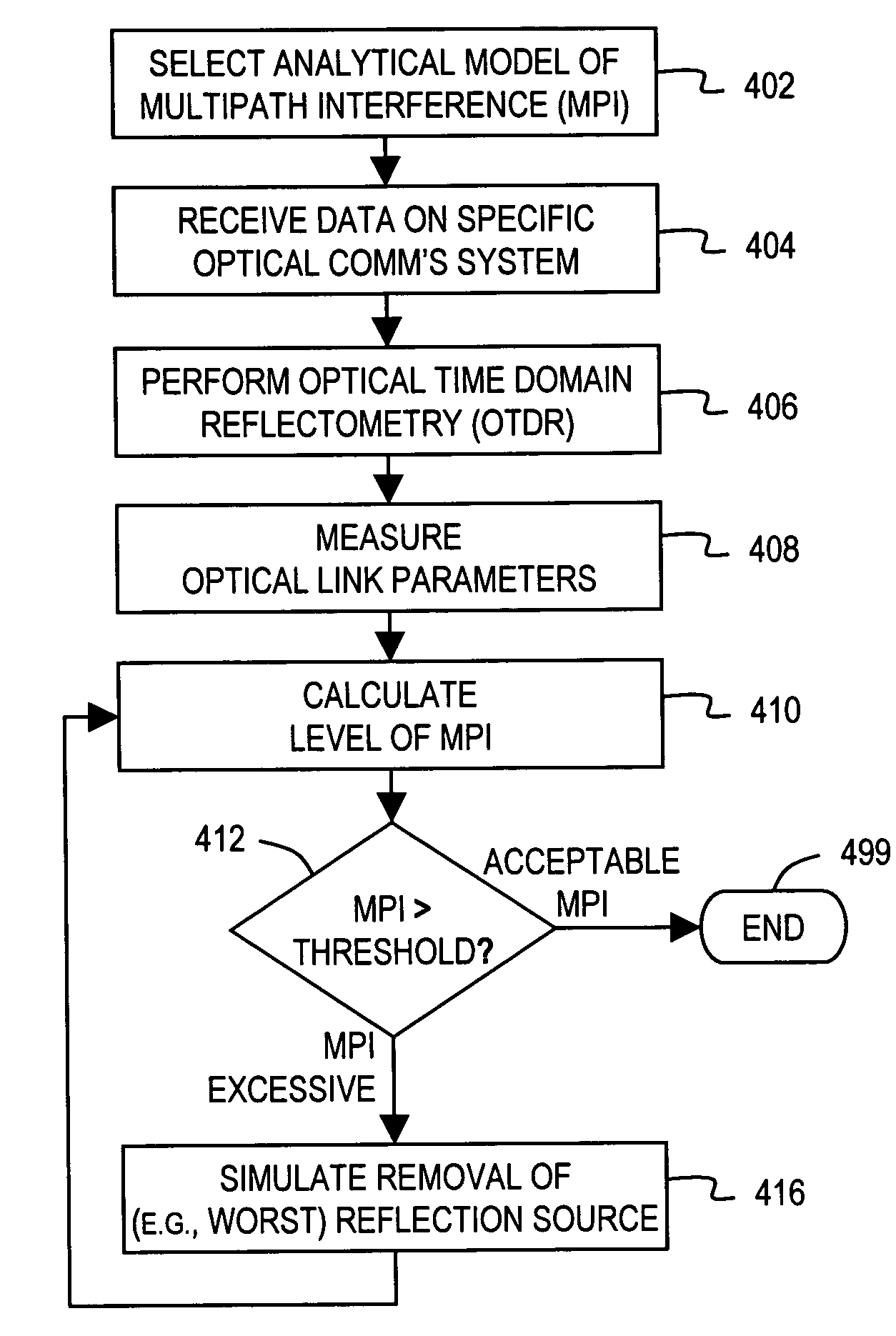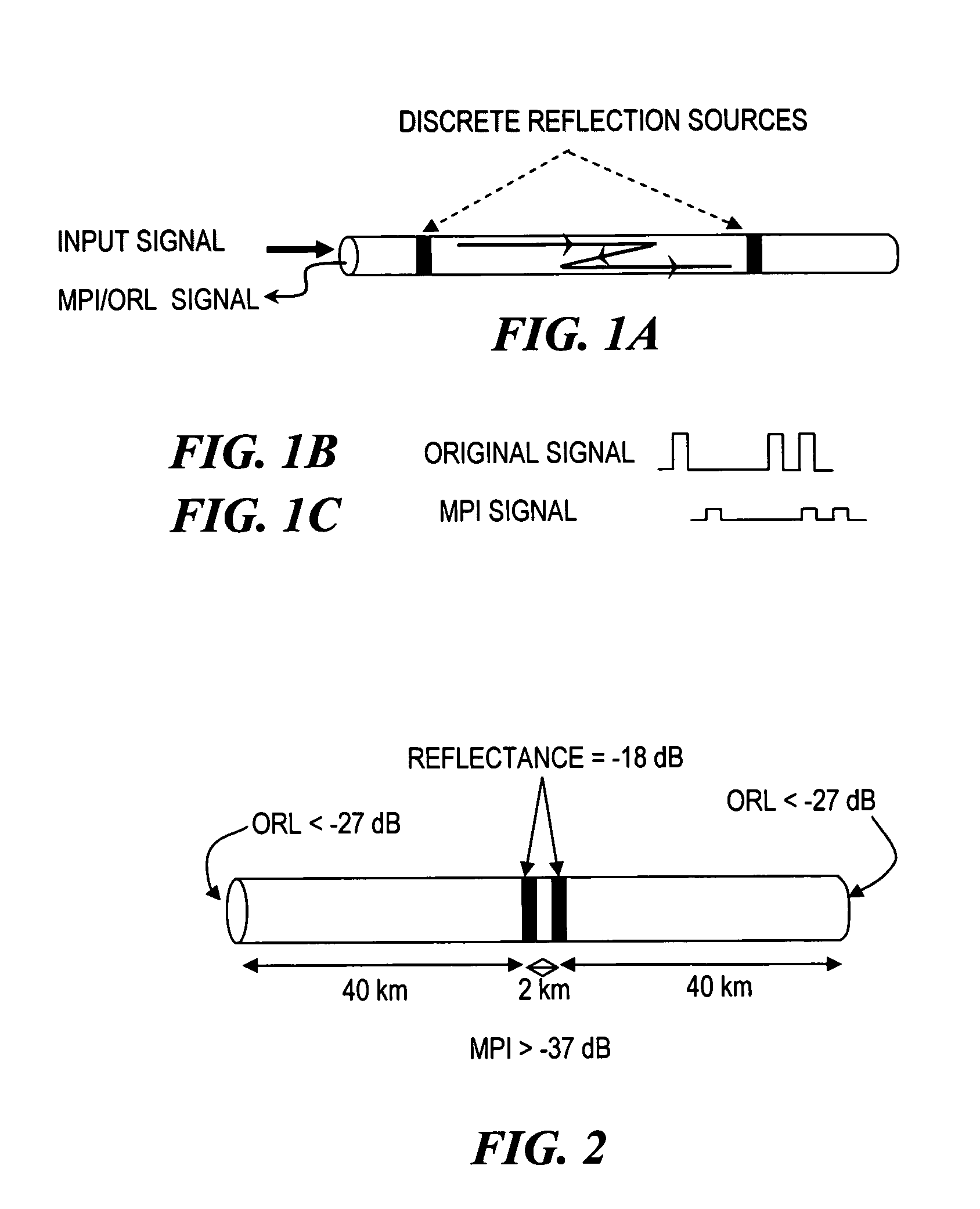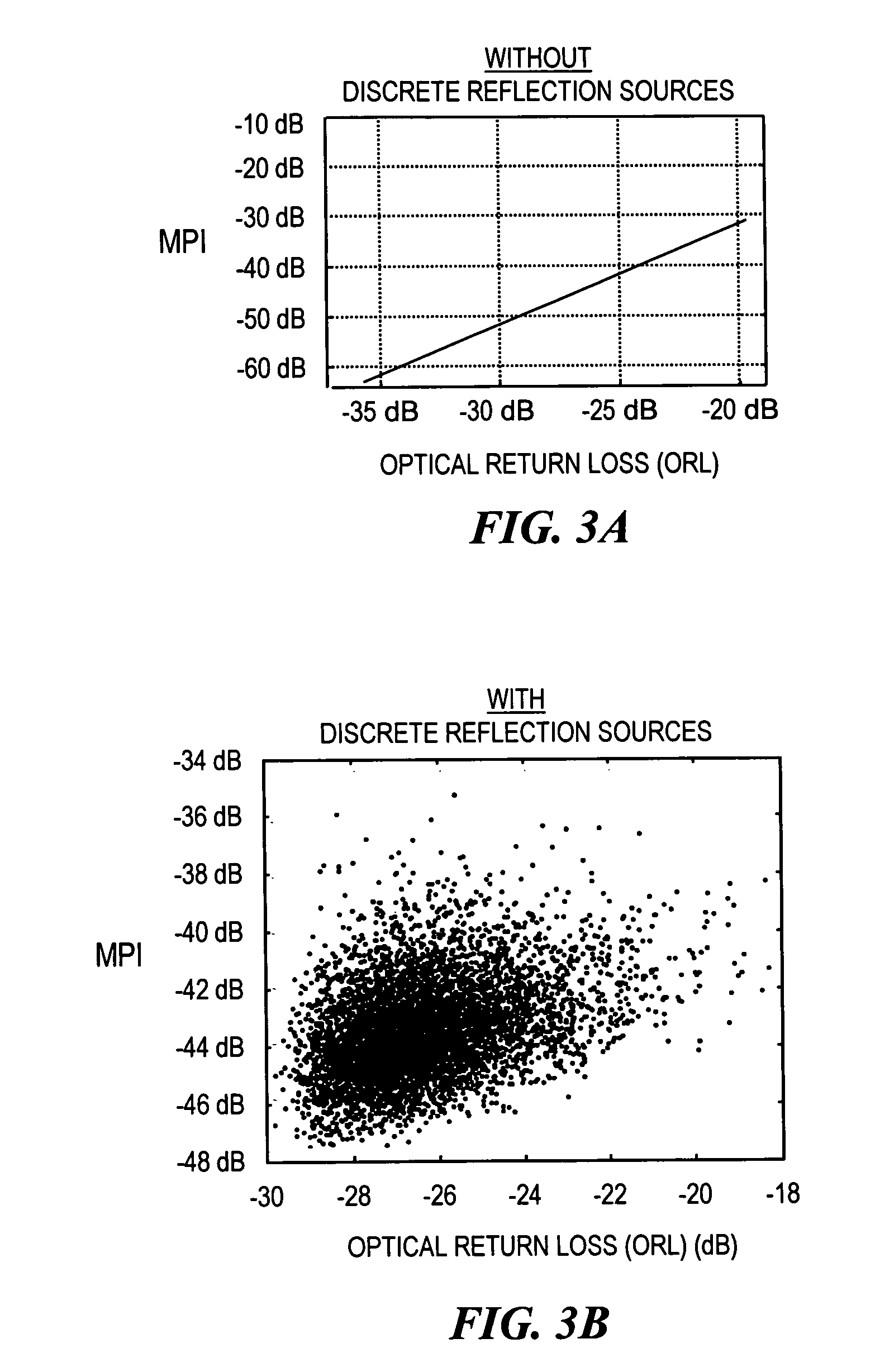Arrangement for characterizing and reducing multi-path interference (MPI) and/or optical return loss (ORL) in optical transmission links having multiple discrete reflection sources
a multi-path interference and optical return technology, applied in transmission monitoring/testing/fault-measurement systems, transmission monitoring, electrical devices, etc., can solve the problems of reducing the performance of optical communication systems, affecting the operation of the transmission system, and potentially extremely complex constructive and destructive interference, etc., to achieve the effect of facilitating field simulations
- Summary
- Abstract
- Description
- Claims
- Application Information
AI Technical Summary
Problems solved by technology
Method used
Image
Examples
Embodiment Construction
[0030]In describing embodiments illustrated in the drawings, specific terminology is employed for the sake of clarity. However, the invention is not intended to be limited to the specific terminology so selected, and it is to be understood that each specific element includes all technical equivalents that operate in a similar manner to accomplish a similar purpose. Various terms that are used in this specification are to be given their broadest reasonable interpretation when used to interpret the claims.
[0031]Moreover, features and procedures whose implementations are well known to those skilled in the art are omitted for brevity. For example, the selection, construction and / or use of elements employed in optical communications (such as repeaters, couplers, switches, wavelength blocking elements, terminals, and the like) are readily accomplished by those skilled in the art, and thus their details may be omitted. Also, common network communications techniques and network management t...
PUM
 Login to View More
Login to View More Abstract
Description
Claims
Application Information
 Login to View More
Login to View More - R&D
- Intellectual Property
- Life Sciences
- Materials
- Tech Scout
- Unparalleled Data Quality
- Higher Quality Content
- 60% Fewer Hallucinations
Browse by: Latest US Patents, China's latest patents, Technical Efficacy Thesaurus, Application Domain, Technology Topic, Popular Technical Reports.
© 2025 PatSnap. All rights reserved.Legal|Privacy policy|Modern Slavery Act Transparency Statement|Sitemap|About US| Contact US: help@patsnap.com



